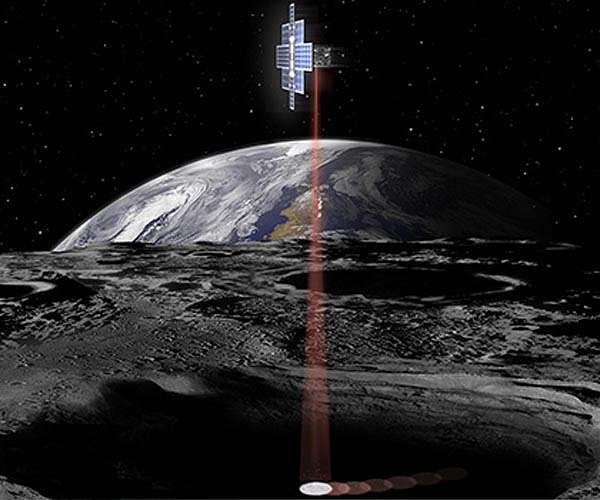
This artist’s concept shows the briefcase-sized Lunar Flashlight spacecraft using its near-infrared lasers to shine light into shaded polar regions on the Moon to look for water ice. Credit: NASA/JPL-Caltech
As astronauts explore the Moon during the Artemis program, they may need to make use of the resources that already exist on the lunar surface. Take water, for instance: Because it’s a heavy and therefore expensive resource to launch from Earth, our future explorers might have to seek out ice to mine. Once excavated, it can be melted and purified for drinking and used for rocket fuel. But how much water is there on the Moon, and where might we find it?
This is where NASA’s Lunar Flashlight comes in. About the size of a briefcase, the small satellite – also known as a CubeSat – aims to detect naturally occurring surface ice believed to be at the bottom of craters on the Moon that have never seen sunlight.